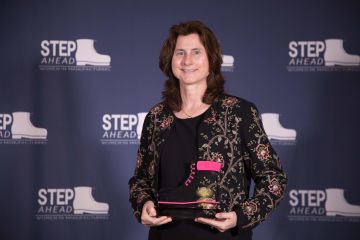So far industry has managed to reduce it carbon emissions through energy efficiency, but there will come a time when it will have to do more to help stop global warming. That’s why INEOS has got involved in a project that could possibly change the world
INEOS has embarked on an initiative that has the power to change the world.
It has joined ELEGANCY, a Norwegian-led research project to fi nd a way better, easier and cheaper way of capturing carbon, the greenhouse gas blamed for global warming.
If the EU agrees to fund the project this spring, INEOS will sponsor a PhD student at the Imperial College in London to explore how, chiefl y, its Grangemouth site in Scotland could capture and store carbon.
“In the future the UK is going to have to run its economy with much lower carbon emissions to meet tougher climate change budget targets so this is a very good collaboration,” said Professor Nilay Shah, head of chemical engineering at the college. “We will provide the student with a lot of the tools to carry out the analysis and the team in Grangemouth will give them a lot of the industrial reality of what may, or may not, be possible on the site.”
INEOS, he said, was the perfect company to work with on a project that was close to the college’s heart.
“It is quite a far-thinking company and has some amazing facilities, not only in Grangemouth, but also in mainland Europe and it’s very interested in what we’re trying to do in hydrogen and carbon capture,” he said. “All the indications are that they are very open to have this kind of collaboration and to be challenged, and to be pushed hard, to go green and go quickly.”
The college has recently built a pilot carbon capture facility to better understand how carbon capture works.
“We want to show companies like INEOS that it’s actually possible to keep operating in a low carbon environment,” he said.
Industry has so far managed to reduce its emissions through energy efficiency even though it is not legally obliged to do so.
But Professor Shah said companies like INEOS were sensible to start making more plans for the future before the law did change.
“It not only shows their commitment to reducing their carbon footprint but also that they realise their wider obligations to society,” he said.
Professor Shah said INEOS’ decision to want to work closely with a PhD student was also refreshing because the company knew that the student might ask some diffi cult questions and expose ineffi ciencies within the business.
“The student might potentially find alternative ways of doing things which can be better, so the people at the other end, need to be comfortable to be open about what they’re doing,” he said. “To us, this collaboration shows that INEOS wants to go down a very clean production process path.”
Governments believe capturing and storing carbon is part of the road to creating a lower carbon economy.
But industry, in some ways, is sceptical. It says not only is the technology currently too costly to build and operate, but no one has thought about how its unwanted gas could be distributed to those who need or want it.
INEOS, which produces carbon dioxide as a byproduct of its processes, says the PhD student will spend most of their time at Grangemouth, and its cracker sites in Rafnes, Norway, and Köln, Germany.
“That’s what appealed to INEOS,” said Colin Pritchard, Energy and Business Manager at Grangemouth. “This is not going to be a purely academic exercise. The solutions need to work in industry.”
The student will be able to judge for themselves how well their ideas would work in a real-life industrial setting.
INEOS became involved in the project through Greet Van Eetvelde’s R&D network, via Professor Mazzotti at ETHZ in Zürich and Professor Shah, both of whom are ELEGANCY partners. If it goes ahead, in July, INEOS will explore the pros and cons of carbon capture and storage, as part of the consortium of hand-picked industrial partners and academic institutions in Europe.
“It is a big project with the potential to change the world but even a company as big as INEOS needs to work with other partners to make this happen because the challenges are beyond one simple engineering thing,” said Colin whose job is to ensure Grangemouth’s manufacturing plant is supplied with suffi cient steam and power.
Greet, who chairs the pan-INEOS Carbon and Energy Network, drives R&D projects across INEOS’ businesses. Her aim is to understand and generate industry-proof solutions to the challenges of switching to a lower carbon economy.
“We hope, through our industrial experience and operational knowledge, that we can help to plot a pathway to that future,” she said.



















